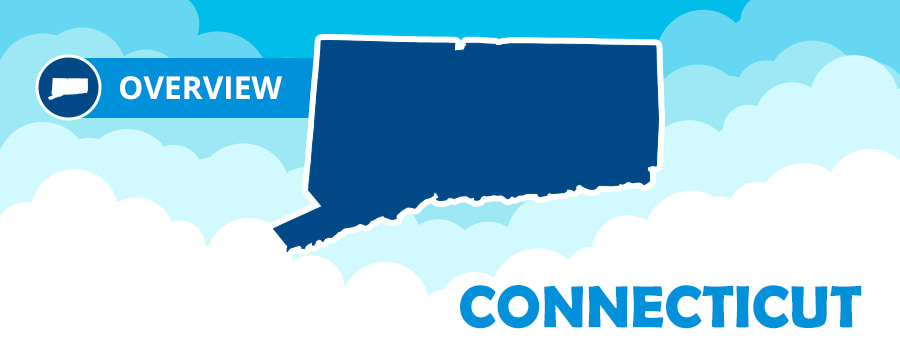Homeschooling In Connecticut
Whether you live in Connecticut or are planning to move to the state, you’re probably curious as to what it’s like to homeschool there. Perhaps you’re wondering what the legal requirements are or are looking to find a local homeschool group. Whatever your situation may be, you can find tons of helpful information about homeschooling in Connecticut here.
This page will help you to get started with homeschooling in Connecticut step-by-step. Use the links below to guide you to the areas you are most eager to learn about:
- How to Homeschool in Connecticut
- Connecticut Homeschooling Laws
- Connecticut Homeschool Associations
- Connecticut Homeschool Groups and Co-ops
- Homeschool Field Trips in Connecticut
- Connecticut Standardized Testing and Test Prep
- Why Time4Learning is the Leading Homeschool Curriculum in Connecticut
This information should by no means be interpreted as legal advice. It is your responsibility to interpret and understand the laws that you will be homeschooling under.
How to Start Homeschooling in Connecticut
Ready to get started? Here are the suggested steps* to begin homeschooling in Connecticut:
- Submit a notice of intent to homeschool form to the superintendent of schools in your town within 10 days of starting to homeschool. This form will be effective for one school year.
- Choose the ideal curriculum for your family.
- Keep a portfolio of your child’s progress with sample work from your child.
- Start homeschooling!
* Suggested steps as provided by Connecticut State Department of Education
Connecticut Homeschooling Laws
Connecticut provides suggested procedures for parents wishing to homeschool. All children ages 7 to 17 must attend school under compulsory education laws, and home education is one way to fulfill this obligation. To comply with the guidelines for homeschooling in Connecticut you must:
- File an intent to homeschool form within 10 days of starting home instruction.
- Teach reading, writing, spelling, English grammar, geography, arithmetic, U.S. history and citizenship (including a study of the town, state, and federal governments) as part of your curriculum.
- Attend an annual portfolio review. Please note that this annual review is optional and some schools may not even request one.
Connecticut Homeschool Associations
For homeschoolers in Connecticut, the state has several helpful associations for families to be a part of. These homeschool associations in Connecticut can help families by providing much-needed resources, camaraderie, learning opportunities, and more:
- Connecticut Homeschool Network (CHN)
- The Education Association of Christian Homeschoolers in CT (TEACH)
Connecticut Homeschool Groups and Co-ops
Homeschooling families also have several options when it comes to homeschool groups and co-ops in Connecticut. Various support groups are available for both new and experienced homeschoolers. These groups are found throughout the state and offer support and resources for families, as well as events and field trip opportunities. Visit our Connecticut Homeschool Groups and Co-ops page to learn more.
Homeschool Field Trips in Connecticut
With the flexibility that homeschooling provides, many families love making the most of local attractions during less busy times. Connecticut offers a ton of destinations for students to maximize their homeschooling lessons such as museums, zoos, and more. Start planning your next homeschool field trip by discovering all the options available on our Connecticut Field Trips for Homeschoolers post.
Connecticut State Test Prep
Many parents find it helpful to have their students evaluated in order to determine how they’re progressing. If you plan on having your child take standardized tests in the state, you’ll find that Time4Learning can help prepare them with our flexible, student paced curriculum. Our online lesson plans can help you and your child work on specific areas of study and hone in on difficult topics. Learn more in our Connecticut test prep page.
Why Time4Learning is the Leading Homeschool Curriculum in Connecticut
Time4Learning covers all the core subjects that are required by Connecticut homeschool law. Our PreK-12, online curriculum offers standards-based instruction in math, language arts, science, social studies, and more.
Time4Learning also includes lesson plans and automated recordkeeping, making it easy for families to meet the legal requirements of homeschooling in the Constitution State. If you have a budget to stick to, the cost of homeschooling in Connecticut doesn’t have to be an issue with our affordable curriculum that allows you to start, stop or pause at anytime.
Some of the other reasons why homeschooling families in Connecticut love Time4Learning include:
- Our award-winning, online homeschool curriculum combines education with interactive fun. Students learn through engaging, multimedia-based lessons and activities.
- The self-paced curriculum allows students to progress through the materials at a speed that is most comfortable for them. Students can also repeat lessons, and retake tests and quizzes.
- Independent learning means that students can work on their time, when it’s most convenient for them. This also allows parents to work with younger siblings or focus on other tasks.
- Free printables and homeschool unit study supplements in a number of topics help reinforce online lessons, thereby providing a well-rounded education.
- Automated grading and recordkeeping helps free up parent’s time. Simply log in and print your child’s records to keep in homeschool portfolios.
Try Time4Learning Risk Free!
- PreK-12th Online Curriculum
- 24/7 Access to 3,500+ Lessons and Activities
- Automated Grading & Reporting
- Activity Planner for Easy Scheduling
- Start, Stop, or Pause Membership Anytime







